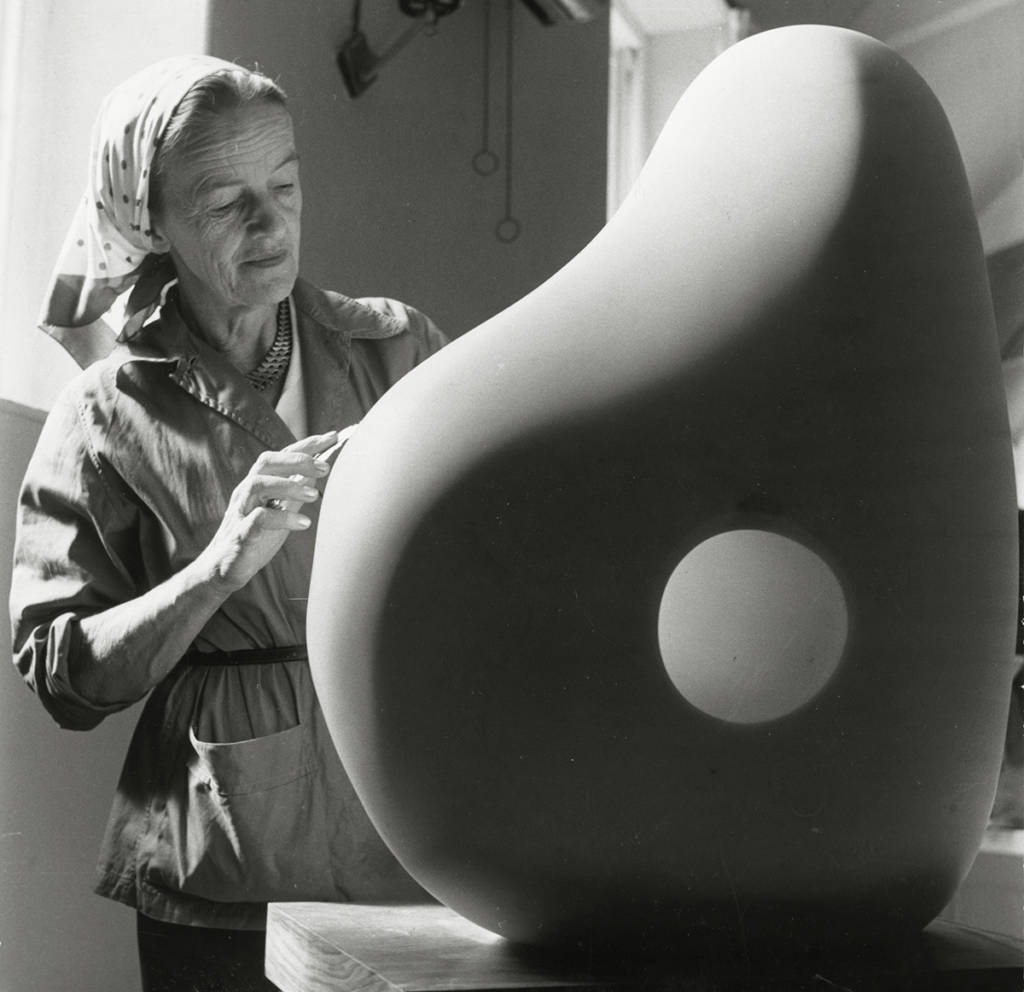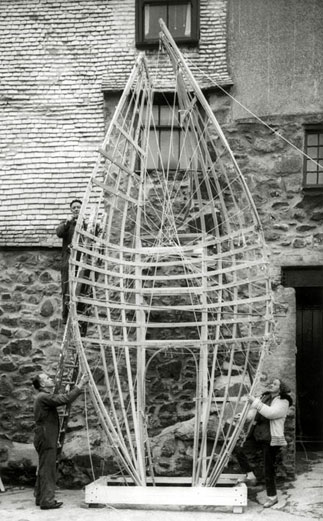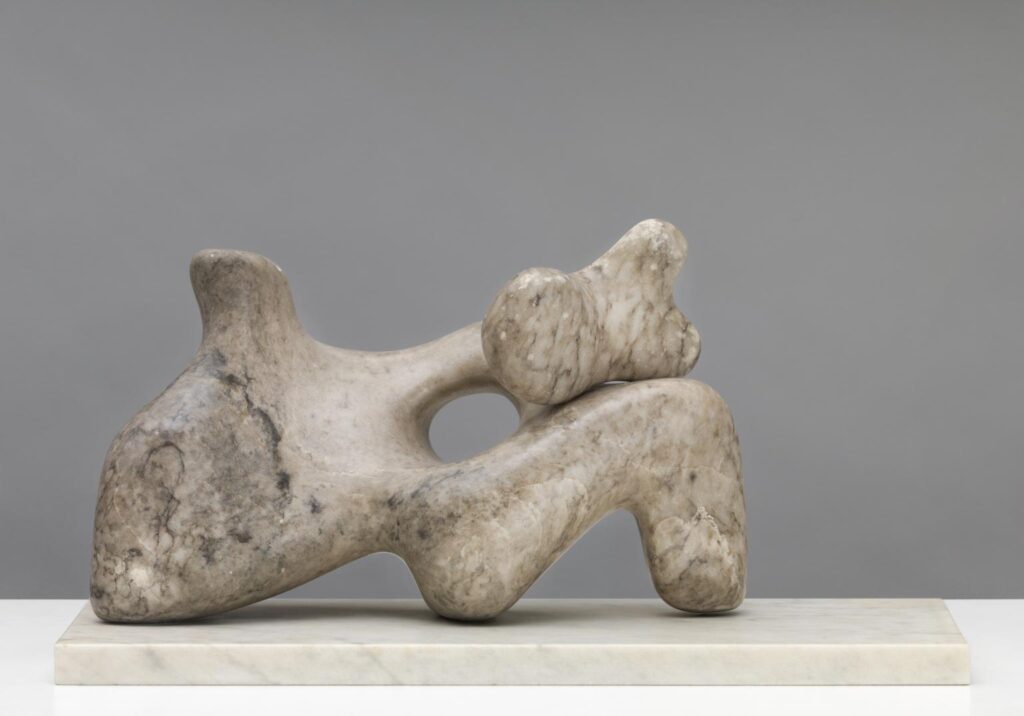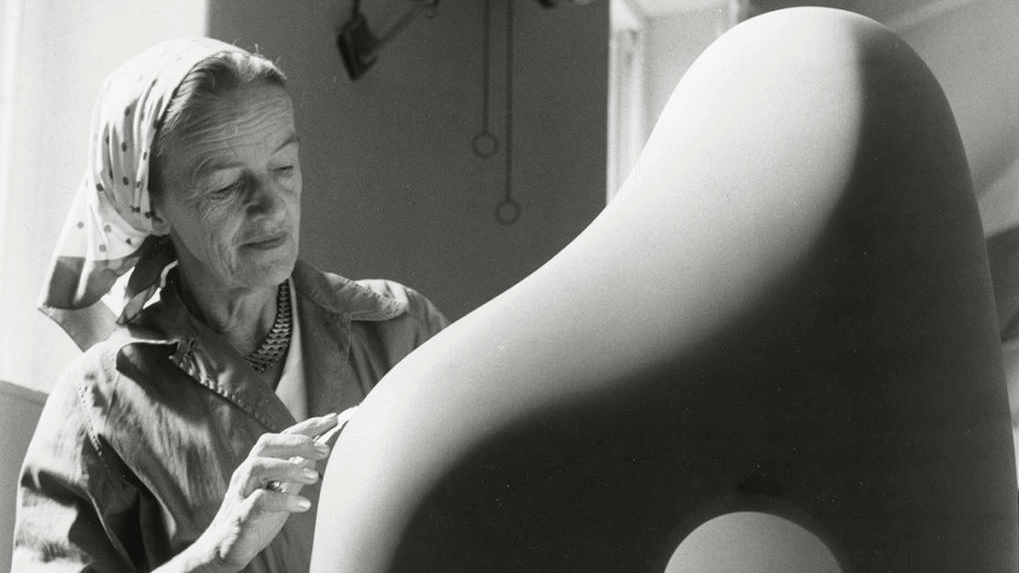By Clara Tyler.
It is commonly assumed that the relationship between art and science is dichotomous and irreconcilable. In separate spheres of influence, the artist and the scientist fight for the title of official commentator on the human condition. Is our understanding of what it means to be human determined by our scientific make-up, or is it our abstract ability to craft from our surroundings? With every cast and sculpture, Dame Barbara Hepworth forged her revolutionary mark on British modernism by going some way into bridging the abyss between science and art. In her own words she developed her sculptures to reflect the development of society and, through doing so, offered a reconciliation between art and science.
Barbara Hepworth (1903-1975) was born in Wakefield and grew up surrounded by the Yorkshire moors. Her rural background was interrupted by brief episodes of urban life, leading her to pursue her studies in art. She studied at the Leeds school of art from 1920 and in 1921 was awarded a scholarship to study at the Royal College of Art (RCA) from which she graduated with a diploma in 1924. It was at RCA where she met Henry Moore, who became her friend and competitor in the field of sculpture.

Hepworth’s permanent move to St Ives in 1939, at the outbreak of the second world war is suggestive of her disillusionment with the urban environment. Her art is indicative of such sentiment: she used natural materials to create her sculptures and was an avid ambassador for the new movement of ‘direct carving’, where the artist crafts the sculpture out of an original material, as opposed to using casts and moulds to fashion the sculpture. Through the process of direct carving, Hepworth showed the close link between the artist and their form. By leaving her etching marks on the sculpture she draws the viewer closer to her art by encouraging them to touch the sculpture, implicating them in the artistic process. Hepworth once said, ‘everything I make is to touch’, and her donation of one of her sculptures to a school for the visually impaired shows her to be true to this statement, requiring her viewers to engage with the hand of the artist through the use of their own hand.
Hepworth’s use of spaces and hollowed areas in her work requires her audience to engage with their bodies when looking at her art. One of her most famous sculptures, Two Forms, particularly challenges the viewer to involve themselves in the art work through the presence of holes. These voids in the work encourage her audience to investigate the view through the holes and how they can change it. Hepworth’s attention to fine details also draw the viewer closer to the form, her choice to polish the oval recess in the sculpture goes some way to softening the transition between sculpture and sky behind, whereas the abrupt gap between the two semi circles creates a severe disjuncture in the work. The context of this sculpture is important; produced in the same year of the moon landing, Hepworth is perhaps commenting on human progress. By encouraging viewers of her work to immerse themselves in the sculpture, and showing the infinite possibilities to see what they want through the holes, she is perhaps experimenting with the representation of the limitless possibilities of mankind. Critics have suggested that the circular shape of the hole is perhaps emblematic of the moon, if looking at the sculpture at the right time and place, you would be able to see the moon right through it, however, I wonder whether this is a too crude reading of the work. Rather than encouraging a specific interpretation of the sculpture, Hepworth shows the boundless capability of scientific progress by encouraging a reading unique to each viewer.

Hepworth wished her work to engage with daily life and, in a reciprocal fashion, for daily life to immerse itself with her work. Her legacy suggests she achieved this: the opening of her home and studio in St Ives as a Tate gallery allows viewers to walk all over her life and work. But, perhaps the specific work most involved in daily life is Winged Figure (1963) clamped to the side of the John Lewis flagship store in Oxford Street in London. It is intriguing to me that Hepworth was chosen as the artist whose work should be hung off one of the busiest streets in London. Throughout her career, Hepworth frequently alluded to the tension between natural form and the human figure, and Winged Figure is one of those works, where the stretched out aluminium figure is restrained by stainless steel rods. The tension embodied in this work is a frequent feature in her portfolio and shows the relationship between nature and human progress. Rather than Hepworth showing the two forces to be opposing and incongruous, she instead suggests human progress and nature stretch and test each other, and are ultimately implicit with each other.

Hepworth’s life was blighted by significant personal events. Her first marriage to John Skeaping ended after 8 years, when she met and fell in love with the painter, Ben Nicholson who was also married at the time. She had one child with Skeaping, Paul, who died in a plane crash whilst serving for the Royal Air Force. Whilst she travelled to Greece to mourn the death of Paul, her friend sent her a large shipment of Nigerian guarea hardwood and her work briefly turned to Greek-inspired woodcarving when she returned, resulting in sculptures such as Corinthos (1954) and Curved Form (1955).
She had triplets with Nicholson in 1934, naming them Rachel, Sarah and Simon, and the significance of their birth was also reflected in her work, most obviously in Mother and Child, produced in the same year. Again, Hepworth’s style of direct carving allowed her to engage more closely with the material and is suggestive of the vitality of the subject of mother and child. Furthermore, the void in the centre of the work is emblematic of the space in which the child once occupied, but is now separate from the mother’s body. Both child and mother are made from the same piece of Cumberland alabaster, alluding to the creation of child from the mother’s flesh. There is also meta-artistic significance in the parallel between the crafting of child from mother, and art from artist, and through drawing this parallel Hepworth refers to the notion of the ‘woman’ artist. She once stated: ‘a woman artist […] is not deprived by cooking and having children, nor by nursing children with measles – one is in fact nourished by this rich life, provided one always does some work each day; even a single half hour, so that the images grow in one’s mind’.

http://www.tate.org.uk/art/work/T06676
Does the position as a ‘woman artist’ allow Hepworth to make a more nuanced argument in comparison to that of Henry Moore in his bronze sculpture of the same name, Mother and Child (1954)? Henry Moore’s piece shows the nurturing role of the mother, especially in a post-war period, where the infant is shown to be fiercely suckling from the mother’s breast. I believe Hepworth instead portrays a fluid representation of the reclining mother with the infant resting on the figure, showing the beauty and symbiosis of the two; the child nurtures the mother just as much as the mother nurtures the child. It is possible for Hepworth to make such a statement due to her position as a woman artist and a mother, and she uses this unusual position to create subtle feminist undertones in her work.
After the birth of her triplets, Hepworth’s work moved noticeably from figuration to abstraction, from depiction of the human figure, to more non-specific sculptures suggestive of the landscape. We can support this change in style of her art with contextual knowledge of her life: the outbreak of the second world war instigated her move from her hometown of Wakefield to the beauty of the Cornish coast, where her work became increasingly abstract. It is possible to argue that this transition in her art is resemblant of her disillusionment with human progress, but I believe it is more likely to be representative of the reassurance she receives from the permanence of the presence of our landscapes.
Hepworth was a unique artist in many respects; being a woman in the twentieth century modernist movement is one such reason, but also her shrewd knowledge of current affairs and scientific progress made her work relevant to her context. In this way, she challenges the perception of art as irrelevant to daily life and raises its applicability. I don’t pretend to equate art and science through looking at Barbara Hepworth, and I also don’t believe that is what she intended to portray. However, I do believe that Hepworth’s work shows the entwined nature of science, art and our environment. It is not possible to totally isolate these fields of knowledge and Hepworth shows the importance of having an all-rounded awareness in order to be able to make astute judgements of the human condition.

